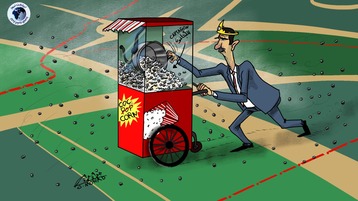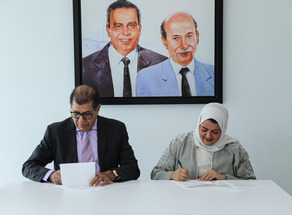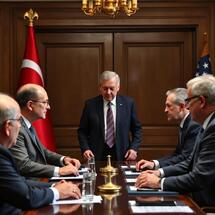-
icious Cycle of Tyranny: Accumulating Crises and the Path to Collapse

Often, dictatorial regimes in their final stages face a series of complex and varied crises. These crises, stemming from decades of repression, systemic corruption, economic mismanagement, and international isolation, exacerbate problems instead of resolving them. Each decision made to address any issue leads to new crises emerging or intensifies existing ones. Thus, the regime becomes trapped in a vicious circle of problems that are difficult to escape, accelerating its collapse.
The ruling clerical regime in Iran exemplifies this pattern. In addition to the common traits shared with other dictatorial systems, it possesses unique characteristics. Among these is the exportation of internal crises abroad through igniting wars and regional interventions, along with the widespread corruption at all levels of government, described by officials themselves as "corruption above the system." Moreover, the regime is marked by a comprehensive suppression of basic freedoms and overt hostility towards women, reflected in the high number of political female prisoners, which underscores this antagonistic approach.
**Domestic Crises: Corruption, Mismanagement, and Social Repression**
The clerical regime suffers from a multifaceted crisis to the extent that even its affiliated media cannot help but acknowledge it. On November 13, the government-affiliated site "Jahaan San'at" stated, "The fourteenth government is mired in a swamp, and every step it takes, whether right or wrong, leads to further sinking." For instance, attempts to reform energy subsidies have resulted in significant price distortions and new distribution problems, revealing the depth of administrative gaps.
Additionally, the crisis of rising fuel prices and recurrent electricity outages, especially in winter, disrupt the daily lives of citizens. In this context, the newspaper "Ham-Mihan" pointed out that erroneous policies in the energy sector, along with international isolation, have made Iran one of the worst countries in terms of environmental pollution and resource mismanagement.
**External and Environmental Crises: Heavy Costs Borne by the People**
To fund its regional interventions and military adventures, the regime relies heavily on the use of diesel in factories and power plants, leading to air pollution and an increase in diseases. Simultaneously, this excessive dependence on diesel and fossil fuels has caused an energy shortage crisis, forcing the government to cut electricity in many cities. The site “Rooidad24” asked on November 14, "Where is the nuclear electricity amid peak power outages? The Iranian people have paid a heavy price for the peaceful nuclear program, but why is this electricity not used to save the country from repeated outages?"
**Repression and Executions: Tools of Intimidation Against Protests**
In an attempt to delay public uprisings, the regime resorts to increasing the number of executions, particularly public executions, to instill fear among the populace. However, these repressive policies backfire, bolstering resistance both inside and outside prisons. Meanwhile, the regime's false promises, such as lifting the internet ban or abolishing guidance patrols, have failed to pacify the streets and have instead heightened the public's hatred towards the regime.
On November 12, the newspaper "Setareh Sobh" warned, "We have an angry society that does not trust this regime's ability to improve conditions. If resistance moves to the streets, the situation will become more complicated, as control would be in the hands of military forces rather than the government."
**The Final Word**
The multiple crises facing the clerical regime are interconnected, such that resolving one exacerbates the others. Rampant corruption, systemic repression, and failed foreign policies have led the regime into a dead-end. The Iranian people, who no longer trust any of the regime’s false promises, await the moment that will ignite widespread protests.
The clerical regime has sunk into the quagmire of its crises, making it impossible for it to escape this vicious circle. These circumstances make its collapse a matter of time alone.
On this occasion, Mrs. Maryam Rajavi wrote on her X account in commemoration of the fifth anniversary of the national uprising in November 2019:
"The November 2019 uprising was a true example of the battle for regime change. It represented a model in which aware and deprived youth formed its passionate elements, inspired by the approach of the strongholds of the uprising and embodying the strategy of the People’s Mojahedin, namely, the strategy of uprising strongholds in the rebellious cities. Five years ago, the bloody month of November was a cry of a nation yearning for freedom and a torch that will remain eternal in the hearts of the people. I pay tribute to the brave prisoners in Evin and Gohardasht prisons, who revived the memory of the hero people’s roar in the November 2019 uprising from behind bars with their courageous voices. The blood of the martyrs of that uprising serves as an eternal impetus to continue the struggle against
**System of Mir Mohammadie*
You May Also Like
Popular Posts
Caricature
BENEFIT Sponsors BuildHer...
- April 23, 2025
BENEFIT, the Kingdom’s innovator and leading company in Fintech and electronic financial transactions service, has sponsored the BuildHer CityHack 2025 Hackathon, a two-day event spearheaded by the College of Engineering and Technology at the Royal University for Women (RUW).
Aimed at secondary school students, the event brought together a distinguished group of academic professionals and technology experts to mentor and inspire young participants.
More than 100 high school students from across the Kingdom of Bahrain took part in the hackathon, which featured an intensive programme of training workshops and hands-on sessions. These activities were tailored to enhance participants’ critical thinking, collaborative problem-solving, and team-building capabilities, while also encouraging the development of practical and sustainable solutions to contemporary challenges using modern technological tools.
BENEFIT’s Chief Executive Mr. Abdulwahed AlJanahi, commented: “Our support for this educational hackathon reflects our long-term strategic vision to nurture the talents of emerging national youth and empower the next generation of accomplished female leaders in technology. By fostering creativity and innovation, we aim to contribute meaningfully to Bahrain’s comprehensive development goals and align with the aspirations outlined in the Kingdom’s Vision 2030—an ambition in which BENEFIT plays a central role.”
Professor Riyadh Yousif Hamzah, President of the Royal University for Women, commented: “This initiative reflects our commitment to advancing women in STEM fields. We're cultivating a generation of creative, solution-driven female leaders who will drive national development. Our partnership with BENEFIT exemplifies the powerful synergy between academia and private sector in supporting educational innovation.”
Hanan Abdulla Hasan, Senior Manager, PR & Communication at BENEFIT, said: “We are honoured to collaborate with RUW in supporting this remarkable technology-focused event. It highlights our commitment to social responsibility, and our ongoing efforts to enhance the digital and innovation capabilities of young Bahraini women and foster their ability to harness technological tools in the service of a smarter, more sustainable future.”
For his part, Dr. Humam ElAgha, Acting Dean of the College of Engineering and Technology at the University, said: “BuildHer CityHack 2025 embodies our hands-on approach to education. By tackling real-world problems through creative thinking and sustainable solutions, we're preparing women to thrive in the knowledge economy – a cornerstone of the University's vision.”
opinion
Report
ads
Newsletter
Subscribe to our mailing list to get the new updates!





















